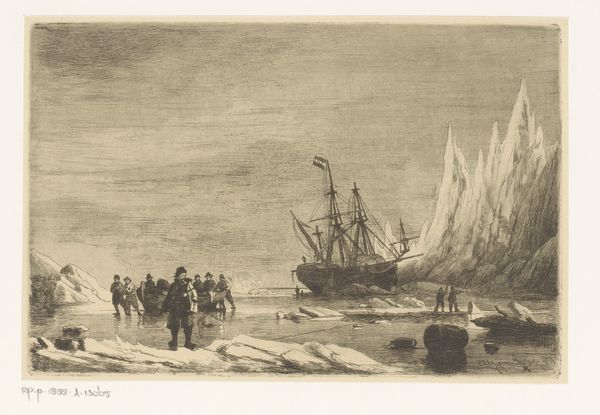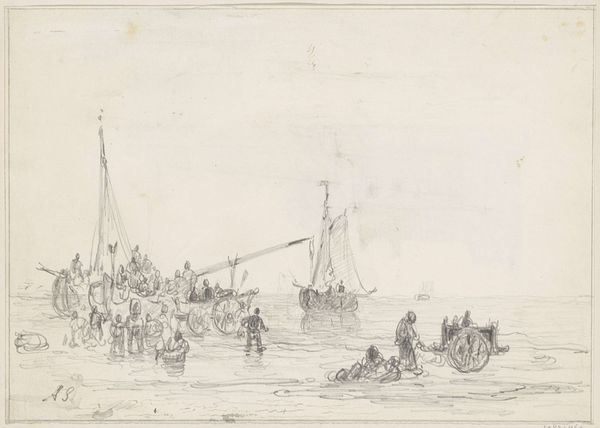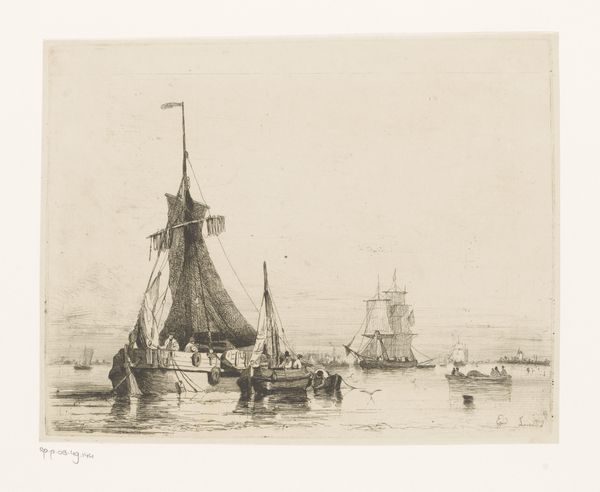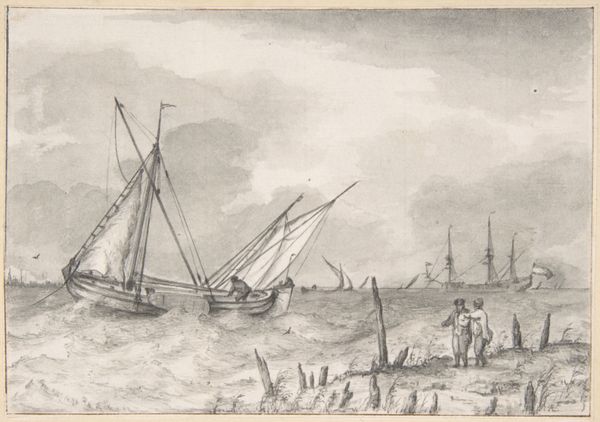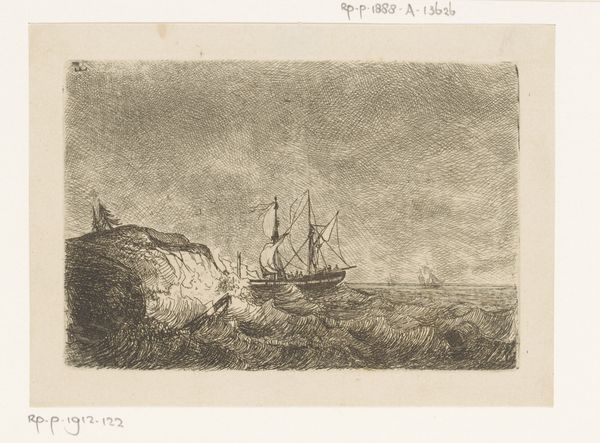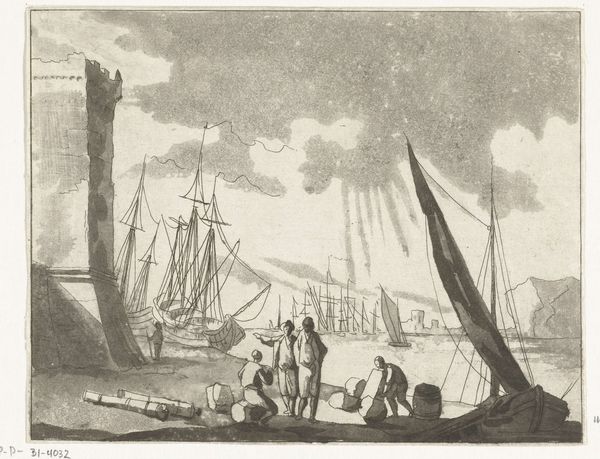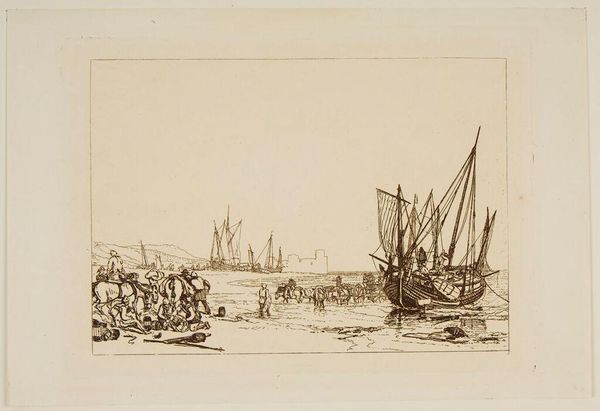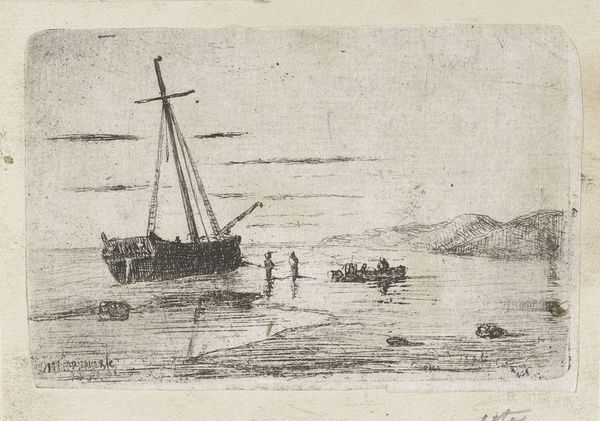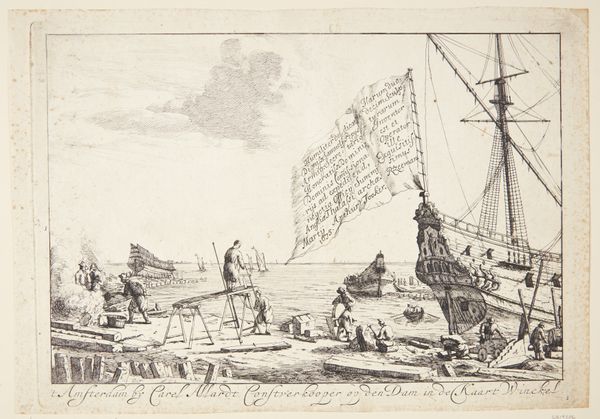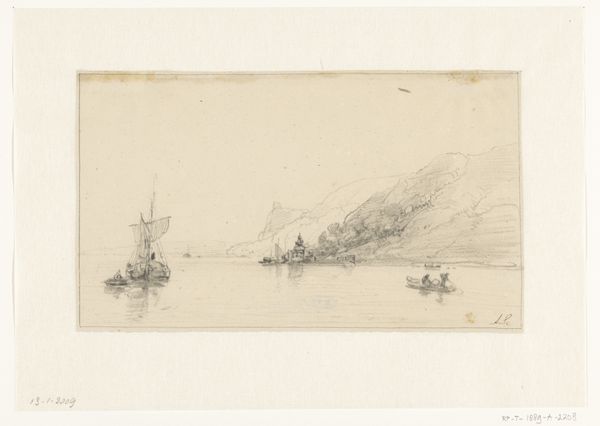
Dimensions: height 148 mm, width 222 mm
Copyright: Rijks Museum: Open Domain
Curator: This etching, "Overwintering op Nova Zembla," by Egidius Linnig, was created around 1853. It’s currently held here at the Rijksmuseum. Editor: It has an undeniably bleak feel. The monochromatic palette, the vast expanse of white... there's a palpable sense of isolation and struggle embedded in the scene. Curator: Linnig captures a historical event here, the harrowing winter Willem Barentsz and his crew endured on Nova Zembla in 1596-97. These expeditions, often funded by merchants seeking new trade routes, represent a significant chapter in Dutch maritime history. Editor: Knowing the context enriches the experience. I see men pulling what appear to be supplies away from their ship, set against a backdrop of imposing ice formations. The scale seems to emphasize humanity's vulnerability against nature’s power. What’s your reading of the power dynamics in the imagery? Curator: Linnig highlights the perseverance of the Dutch explorers against seemingly insurmountable odds. This print circulated widely, shaping public perception of that period in Dutch history. Its narrative reinforces themes of national pride and the ambition of these voyages. The romantic treatment idealizes these journeys, often overshadowing the immense human cost involved in exploring the Arctic. Editor: It certainly does that, the romanticism almost feels at odds with the reality of probable cold, hunger, disease, maybe death. Perhaps this tension is central to grasping its intended message: how societies chose to view these feats versus their human impact and individual consequences. There were of course profound geopolitical impacts involved in such voyages, always underpinned by issues of colonization, ownership, resources. Curator: The visual narrative here deliberately omits any sense of internal strife or dissent that might be realistic in that difficult time. These images were essential to solidifying the national historical myth and supporting colonial expansion at the time. Editor: Looking closely reveals so many more layers of meaning. Considering not only the represented scene but also how the print operated within broader historical and cultural currents helps unpack this artwork. Curator: Exactly. And in so doing, we have gained a richer and critical understanding of Linnig's etching.
Comments
No comments
Be the first to comment and join the conversation on the ultimate creative platform.
